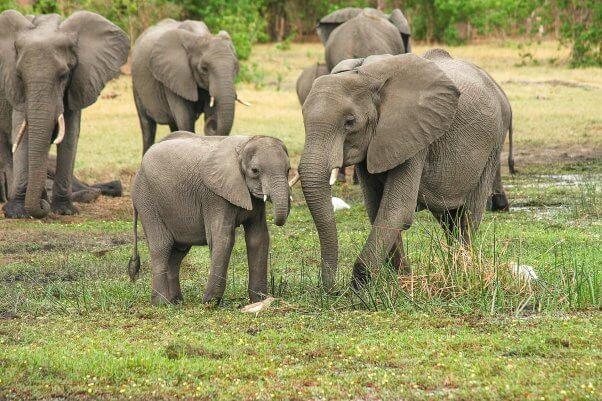3 Reasons to Never Touch an Elephant—According to Science
PETA knows that elephants shouldn’t be forced to let humans touch, ride, or otherwise exploit them, and now science is backing us up. A study published in the International Journal of One Health, which assessed scientific literature to identify concerns related to tourist interactions with elephants in Asia and Africa, pinpointed three reasons you should never touch an elephant.

Study Reveals Risk of Infection and Injury at Sham Elephant Sanctuaries
In Asia—notably Thailand and India—the public is often allowed to touch, feed, and bathe elephants at sham sanctuaries. At other tourist attractions, captive elephants are forced to give rides. In Africa, however, most tourist experiences that involve elephants are strictly observational and only allow visitors to watch them roam in their natural habitat.
The study pinpointed the following three concerns with “hands-on” elephant interactions.
Why You Should Never Touch an Elephant
1. Elephant Welfare
The research published by the International Journal of One Health indicates that several studies have shown that abuse is prevalent at elephant camps and temples, where the animals often endure psychological and physical torment through beatings, chaining, and social deprivation, among other stressors—and that they suffer in poor conditions with untreated wounds, skin infections, musculoskeletal trauma, malnutrition, and other health issues.
2. Public Health
Twelve zoonotic diseases—including salmonella, tuberculosis, and elephant pox virus infections—were identified as potentially transmissible between elephants and humans.
3. Safety
The study found that most occurrences of elephant attacks on humans involved the mahouts—or the animals’ “handlers”—but incidents of public injury or death do occur.
The authors ultimately concluded that “hands-on” elephant tourist activities are “indefensible” and recommended that interactive elephant-human experiences be legally banned, which is the only way to control public health, safety, and animal welfare risks within the elephant-tourism industry.
The authors recommend that tourists choose only experiences that keep the public at a safe, respectable distance from elephants so that there’s no harm to the animals’ welfare or an increase to the public’s risk of disease or injury.
Why Elephant Rides, Bathing, and Any Other Hands-On Activity Is Cruel
As seen in PETA Asia video, the only way to force elephants to allow humans to ride them or endure other unwanted contact is to threaten them constantly with physical punishment.
Baby elephants are taken from their mothers, beaten, deprived of food and water, and bound with ropes as the process to “crush” their spirits begins. They endure weeks of physical torture, emotional abuse, and loneliness until their spirits break and they become fearful enough to obey their captors to avoid more pain. Handlers at Ayutthaya in Thailand menacingly wave weapons around elephants’ heads, keeping the animals incessantly anxious. The endless violence, trauma, and lack of freedom causes them to sway back and forth in their pen—abnormal behavior that’s never seen in nature.
As travelers turn their backs on obviously cruel animal exhibitions, many facilities are now adding “sanctuary,” “refuge,” “rescue,” “orphanage,” and other compassionate-sounding descriptors to their names. Unfortunately, these terms aren’t regulated in any way—and in far too many cases, the name is new but the abuse remains. Even if the abuse is carefully hidden, as it so often is at sham sanctuaries, all elephants used in direct-contact activities—including bathing, painting, and shows—have been subjected to the malicious “crush” process to make them compliant.
How to Find a Real Elephant Sanctuary
True sanctuaries never buy, sell, trade, breed, exploit, or profit from elephants. They never use bullhooks or punish them in other ways—even out of tourists’ sight—and they don’t force animals who naturally avoid humans into close contact with them. They provide the elephants with the companionship of members of their own species and large natural habitats that allow for normal behavior, including knocking down trees, swimming in ponds, and foraging in forests. These facilities are often closed to the public except on certain days—and when they do offer tours, they keep visitors at a comfortable distance so that they don’t disturb the elephants. Visitors are not allowed to touch an elephant there, because these sanctuaries exist for them—not the tourists. The people who run them respect elephants and work to protect them.

